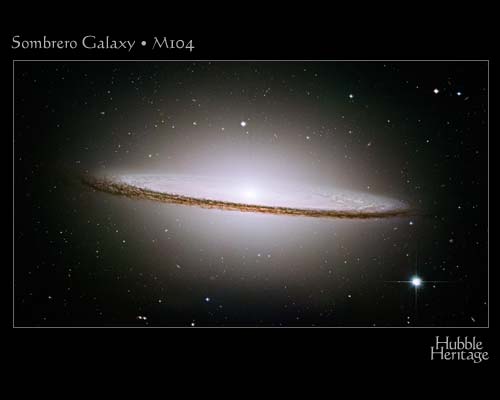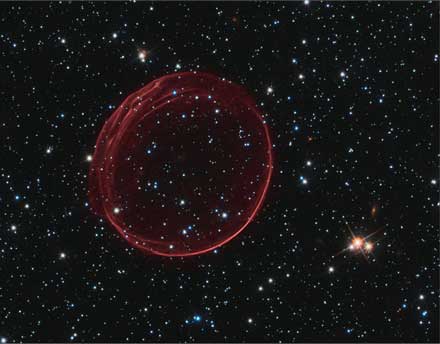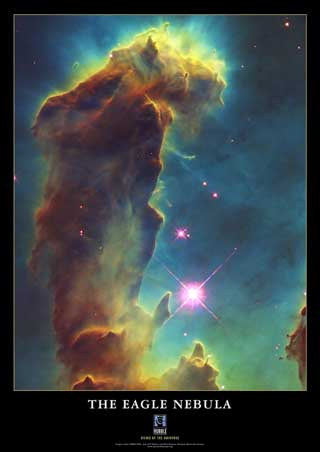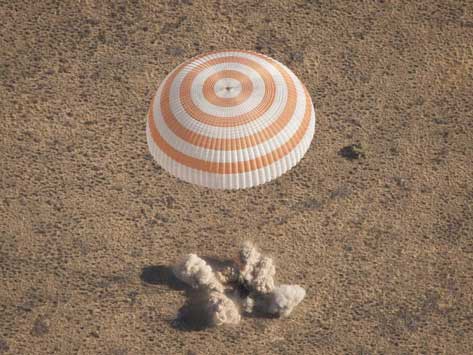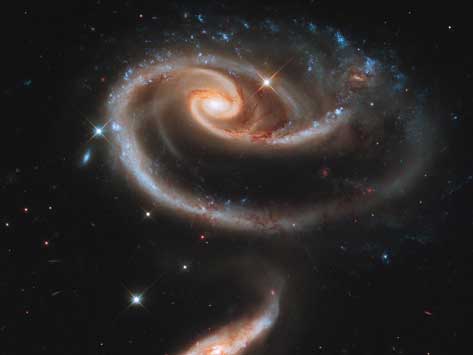‘As an artist you must be really thinking differently to come up with something beautiful, but even artists have not been able to replicate the creation out there, not only the stars but the nebula, the galaxies. It is unimaginable until you see it.’‘I Identify With The Inspiration To Reach Beyond Yourself And Space’
An interview with Mazlan Othman, Director of the UN Office for Outer Space Affairs
Mazlan Othman has spent her life exploring the outer reaches of humankind's scientific exploration. Malaysia's first astrophysicist, she is currently Director of the United Nations Office for Outer Space Affairs, which assists countries in the use space technology for development, provides expert advice, and supports the work of the intergovernmental UN body, the Committee on the Peaceful Uses of Outer Space (COPUOS).
With a scientific and technical subcommittee and a legal subcommittee, the Committee builds international cooperation on complex issues including space debris, space exploration, global planning with relation to near-Earth objects and other significant concerns. In a year that marks the 50th anniversary of human space flight and of the creation of the Committee, Ms. Othman spoke to the UN News Centre about a life with her feet on the ground and her head in the stars.
You are the first astrophysicist of Malaysia, and a woman in a male-dominated field. Were you always interested in space?
I was always interested in physics believe it or not. My first love was physics. And why I fell in love with physics--it's almost a cliché--is because of e=mc2. Not because it is such a beautiful equation but because I thought: how could anything be so big? C is the speed of light, it is a huge number, and even when you multiply it by something small, it is still significant. This for some reason stoked the imagination of the 15-year-old girl.
Through physics, I discovered that astrophysics, or the physics of the stars, of the universe, was the most fascinating. Maybe that goes back to the fact that even before I became a scientist I wanted to be either an artist or to study English literature. My teachers insisted that I should focus on science, and I did. Astrophysics brought the circle closer, because that is where the aesthetics are. Have you ever opened a book on astronomy or astrophysics? Full of inspiring pictures. That's where the aesthetics come from. And I was attracted to the fact that there is a lot of philosophy in astrophysics. We have no clear answers, and this is what drove me. So that's how my interest in astrophysics started, through physics as a vehicle.
What gets me excited is the fact that there is so much to inspire us out there, especially when we talk about human space flight. I think it is innate in human nature. We are always looking for something new out there. Even going back to why human beings left Africa for instance--I'm sure the reason was not just survival but this innate desire in the human psyche to look for new things, to be in new places. That's what has excited me since I was small. Perhaps that's what led me to look at space.
An edge-on view of the Sombrero galaxy. Relatively bright and with a diameter of nearly one-fifth that of the full moon, it is easily seen through small telescopes. The galaxy is one of the most massive objects in the cluster of Virgo galaxies--equivalent to 800 billion suns. Credit: NASA and The Hubble Heritage Team (STScI/AURA)People around the world seemed to be galvanized by space exploration and space science in the 1950s and 1960s. Do you think public interest is waning today?
On the one hand, people take it for granted because we are so successful. We can launch people into outer space and it's only in very rare moments that we get a disaster. Your satellites work like clockwork. You don't have to worry that your calls will be dropped, or your GPS will not work anymore or that Google will no longer post this picture. We are a victim of our own success in that sense.
But in terms of inspiring people, I don't think it's waning. Recently there was a public holiday in Austria and we held a panel in the Vienna Town Hall with astronauts and cosmonauts in the evening. And the place was full, even though it was a holiday. I had to leave at 9:30 p.m. and people were still queuing up for autographs from the astronauts and cosmonauts. So people still get excited. Whenever I speak to children about space their eyes light up. I have never failed to see people get excited if I speak about space. It might look like interest is waning but there is still a lot of interest.
A sphere of gas floats in the depths of space. It is the result of gas being shocked by expanding blast waves from a supernova, a powerful stellar explosion in a small galaxy about 160,000 light-years from Earth. The supernova itself may have been visible in the southern hemisphere around the year 1600. Photo: NASA, ESA, and the Hubble Heritage Team (STScI/AURA). Acknowledgment: J. Hughes (Rutgers University)Can the disparity between countries who have the capacity to undertake space exploration and those who do not reconciled? And what are the long-term repercussions of this division?
The good news is that this gap is getting smaller and smaller. This is what I call a third wave of space exploration. The first wave was, of course, what they call the arms race but there was competition between the U.S. and Russia [then part of the Union of Soviet Socialist Republics, or USSR] that led to a lot of development. The second wave was when the private sector became interested, which led to this big incentive to build satellites. Some of the richest companies in the world today are those that own satellites for broadcasting and other purposes. So the second wave was private sector involvement. We are now in what I call the third wave because developing countries can now surf the wave. There are improvements in our knowledge, there are big leaps in technology that make building a satellite cheaper and faster and you don't need to be a Nobel laureate to try and build a satellite.
Most people don't know this but countries like Algeria, Chile, Pakistan, Malaysia, Thailand--they all have their own satellites now. They have space-satellite building capacity, so that gap is getting smaller. Today when we talk about space exploration, we have to work together. Cosmonaut Alexei Leonov said "together we are better," and there is no area that demonstrates that more than going to space. To go out into the universe costs a lot of money. We need all kinds of technologies; we need all kinds of creative, innovative ideas. No one country can do all of that. It is ripe for international cooperation. And there is all this international cooperation. I believe the future is bright in terms of us working together and not only solving the problems of the Earth, but leaving the Earth.
Given the problem of space debris, is it a positive development that more countries can send satellites into orbit?
That is, of course, a concern for us. There is already too much debris right now, even without what we call the emerging countries being there. I have to put my UN hat on and say that one of the accomplishments of Committee (COPUOS) is the guidelines on space debris. A guideline is not legally binding on the Member States. But we all know that in order to protect the near space environment, we all need to behave ourselves. For most countries, these are not just guidelines. For them, when they contract a satellite, they make sure that the satellite makers know that there are space debris concerns and what they are.
So yes, we have a problem if everyone starts building satellites and we don't regulate them. There is a view that there are not enough regulations out there, but my view--I think this applies to many areas of activity--is that there are enough regulations, it's a question of how we enforce them. How we treat those issues, on an ethical basis. There is a concern where some innovative ideas call for satellites the size of a thumbnail. People are talking about launching swarms of these. The good reason for doing so is that when you get them in a swarm, you can change their shape up in space, like a swarm of bees, depending on the application. It sounds exciting. But then there would be an issue of space debris.
Now we are talking about universities building satellites, even high schools building satellites. If they start launching them without any regulation, of course we'll get into trouble. But again, the regulations are there, and the companies that launch these satellites into space, they too must take responsibility and tell their clients they have to register. Every university belongs to some country, so if there is a regulation that says they must be registered with the government, there is a means of control.
A tower of gas and dust rising from a stellar nursery called the Eagle Nebula. The tower is about 57 trillion miles high, about twice the distance from our Sun to the next nearest star. Starlight illuminates the tower’s rough surface. Credit: NASA, ESA, and The Hubble Heritage Team (STScI/AURA)Companies can launch from international waters and therefore fall in a gap in international law--they are not a state and not launching from within a state. Your thoughts?
Whether or not you launch from international waters, the rocket must be registered to a company or a country. It doesn't matter where it is launched from. Orbital Sciences is a U.S. company that launches from Malaysia because we have a good equatorial site. But because the rocket is launched by Orbital Sciences, they have to take responsibility for that launch.
Is a solution to space debris possible?
We do not have a solution for cleaning it up. Any technology that is going to help us clean up space debris is not there. If anyone tells you they have a good solution, they should quickly tell us and they will make a lot of money!
Space debris is very high on the UN agenda. COPUOS deals with issues of the international legal regime of space and the guidelines and protocols. The issue is not forgotten, it is very much on the front burner.
Is leaving planet Earth the future for humankind?
We've always wanted to go to Mars, and there is the Russian program called Mars 500 where they experiment with people living in isolation for long periods of time. There are so many missions doing recess to Mars to see if we could land, where we could land. We need a lot more information on Mars. The desire to leave Earth to set up an international orbiting space station was there and we achieved it. There was MIR [the Soviet and later Russian space station, operational in low Earth orbit from 1986 to 2001] and now there is the international space station [ISS]. There is this desire to establish a colony on the Moon. It makes sense because it could be stepping stone to other parts of space. The moon has a lower gravity than the Earth, only a sixth of the gravity, so if you launch from the moon, you will have to use less energy and you will of course go further. The desire to go to Mars is because it is somewhat different. You can imagine space tourism to Mars. Wouldn't you like to go?
Is the interest in space exploration at the expense of protecting the environment of Earth?
It doesn't have to be. We need not go to space at the expense of Earth. If you look at where NASA [the US National Aeronautics and Space Administration] is launching from, Cape Canaveral, they have put in draconian environmental measures there. This can be done, it's a matter of ethics. The guidelines are there. For me, the destruction of the ecosystem by rockets is very small. On the other hand, there are remote sensing satellites up there taking pictures of the Earth and telling us what is going wrong with our planet.
High above a cloudy Earth, the International Space Station (ISS) orbits silently. The Space Shuttle Endeavor Crew took the above picture as they departed the space station in mid-December. Endeavor brought up three new astronauts to occupy the ISS and carried home the members of Expedition Three, a trio that has been housed in the ISS since August. Highlights of this Endeavor mission included fixing a solar panel and maneuvering the station to avoid a large piece of passing space junk. Visible in the above picture are the space station's robot manipulator arm as well as several modules and solar arrays.Given the size of the universe, is extraterrestrial life a certainty?
Extraterrestrial life is a significant field of scientific endeavor today. We have a subject called astrobiology, which means studying the possible biological conditions that might exist on other planets not only around our sun but around other stars. Since we have been able to detect extra-solar planets, or planets outside our solar system, this has become a very respectable scientific study. Just think about it: in our galaxy alone, there are billions upon billions of stars, many of them similar to the sun. Then there billions upon billions of galaxies in the universe. You look at all those numbers, that's a heck of a lot of zeros! Even if the possibility is one in a trillion, there are a trillion trillion stars in the universe. The chances of life outside of the Earth are not zero. They may not be significant but they are definitely not zero.
Life can exist in harsh environments. On our own Earth, bacteria, single-cell life has been found in the vents of volcanoes, under the ice in Antarctica. If you think about that, even if the other planets have harsh environments, there could still be life. But don't imagine that to mean life like you and me with two hands, two legs. When people talk about life, you see something with eyes or one big eye, legs. Can you imagine a situation where life has evolved so much that life exists only in an energy form? Life could evolve so much that it does not need a physical form. If that sort of life communicated with you, it wouldn't need to know any particular language, it would just need to read your brain waves.
So there is primitive life, single-cell life; there could also be life as evolved as pure energy form, and then there is everything else in between. Philosophically, scientifically, religiously, whatever way you look at it, the possibilities are there.
Are we ready to have an encounter?
I don't know. Extraterrestrial life has always been associated with aliens and UFOs, there has always been what we call this “giggle factor" or skepticism. I suspect that even some good scientists who may have thought that they had encountered something unusual would not talk about it openly. And so extraterrestrial life must take root as a scientific discussion. Once it takes root and people throw away the idea of it being frivolous or the work of charlatans, people will start seeing it for what it really is.
Do science fiction books and popular movies detract from the evolution of thinking?
Yes, in that they raise strange expectations, but on the other hand they are doing a lot in terms of creating awareness that there might be life out there. The good news is that the Royal Society [a UK-based fellowship of eminent scientists and the world's oldest scientific academy] is holding workshops and discussions on extraterrestrial life. This is a well-respected scientific organization and it brings together all the different aspects, including religious, anthropological, scientific and social aspects of the subject. I heard the other day discussion on what language we might use, and they went into all kinds of issues, including the language of dolphins. Why can't there be other forms of language? As I said, it is being discussed at the Royal Society. I hope this will gain momentum and people will take this seriously from the scientific point of view.
After more than five months on board the International Space Station, Russian Cosmonauts Andrey Borisenko and Alexander Samokutyaev, and NASA Astronaut Ron Garan return to Earth. Above, the Soyuz TMA-21 spacecraft lands in Zhezkazgan, Kazakhstan on 16 September 2011. Credit: NASA/Bill IngallsThe UN Committee on the Peaceful Uses of Outer Space is marking its fiftieth year. How would you characterize its success?
The last 50 years have enabled an environment where we are talking to each other, and that is the best role that the UN can play. As long as we are talking to each other, we are not hitting each other. Through the Committee, we have come up with the outer space treaties and conventions; how to register satellites; what do you do if you find an object from outer space that is not yours; what are the liabilities apart from the duties and conventions. There are principles: principles of remote sensing, of telecommunications, lately guidelines on space debris, safety frameworks for using nuclear power sources in space. We continue to work on space debris, we look at the possibility of a near-Earth object or NEO hitting the Earth and what we would do.
Apart from the possible contact with extraterrestrial life, the other interesting issue is what happens if a big asteroid or some rock out there comes to earth and causes all kinds of mayhem. These are issues being considered by the Committee. Now one of the biggest subjects is the long-term sustainability of space activities, what must we do now to ensure that future generations are able to do in space what we are doing now.
I think the Committee is going in the right direction. Some people feel it should work faster, or look at more issues, but the Committee is conservative in a certain sense. Let's take the issue of extraterrestrial life. Someone might ask why is not an agenda item yet. The answer is that extraterrestrial life has not yet been put on a scientific foundation. Before something comes to the Committee, there has to be a very strong scientific foundation, and this can be dealt with by the scientific and technical subcommittee. Then, when those issues are pretty much resolved, we can take them on to the legal subcommittee. Space debris is such an issue. We discussed space debris from the scientific point of view for years after which we were then confident enough to come up with guidelines. And now the legal subcommittee is looking at which countries are enforcing space debris mitigation. So while it is slow, everything has to be well established so we have a good plan on how to move forward.
Near-Earth objects are a subject of a great deal of attention. Would there be enough time to mitigate the effects of a crash?
If an asteroid were small enough and coming from behind the sun we would have little time. But we now have a network of observatories that continuously monitor asteroids. This is the reason why we have the scientific discussions at the UN because it is through the UN that together we can coordinate on what each observatory can do and compile the information. You may have heard that there was an asteroid that might hit the earth in 2036 or 2017, so you see it can be predicted before. Because we are in a position to predict some of these encounters and because we feel that we may have the technologies to mitigate the aftermath, we have a responsibility to try and do something. Even if we could predict and couldn't do anything but know, we may have the means to mitigate impact, so we are obligated to come together and discuss the matter. Whose decision would it be? It is a global, international decision, not of any one country.
A large spiral galaxy, known as UGC 1810, with a disk that is distorted into a rose-like shape by the gravitational tidal pull of the companion galaxy below it, known as UGC 1813. Credit: NASA, ESA, and Hubble Heritage Team (STScI/AURA)You suggest that it become a matter for the Security Council?
Yes, there is a proposal and it appears to be making traction. I'm not saying it is going to be approved. I have heard some speeches where some people think it is the only body that can make a decision that affects the security of the entire Earth. It could be the only body to do that, but there has not yet been a decision.
What do you like best about your job?
I'm being paid to carry out my hobby. I have always loved the stars, and of course I have now gone into a completely different environment or career, where we are talking about space law, but that doesn't stop me from being inspired by the stars on a daily basis. I still read books and journals about astrophysics.
Would you like to travel to outer space?
I had a chance when I was head of the national space agency in Malaysia. I came up with the astronaut program. There was a selection process, and I could have been part of it but the prime minister told me I had to manage the whole program, and so it was a conflict of interest if I was to create the criteria etc. and become one of the people applying. The easy way out would have been, now that I have the program: I leave, let somebody else manage it, and apply. I didn't think that was a solution because they needed me to carry the program forward from a management point of view, so I gave up. Now I'm no longer working for the government. If someone said to me, "Mazlan, here's an offer to go to space," yes of course I'd go! I'd go without batting an eyelid.
You have worked on building bridges between science and the arts. Why is this of so much interest to you?
In terms of linking the arts and sciences, it was brought very painfully to my attention when I set up the planetarium in Malaysia. You need to put up planetarium shows, and that required me translating my science into some kind of medium that would entertain the public. I was looking for script writers, artists to translate the science into something more artistic. I didn't find any. I started a series of science-inspired arts camps where I brought prominent artists in various mediums. I had performing artists, writers, visual artists, poets, come together with scientists who gave them insight into what is a rock, what are the stars, what are the trees, to give them more inspiration, especially writers, on how you can translate scientific ideas to make them attractive, especially to children. The planetarium was always a showcase of the combination of the two.
What caused this unusual light rock formation on Mars? Intrigued by the possibility that they could be salt deposits left over as an ancient lakebed dried-up, detailed studies of these fingers now indicate a more mundane possibility: volcanic ash. Studying the exact color of the formation indicated the possible volcanic origin. The light material appears to have eroded away from surrounding area, indicating a very low-density substance. The stark contrast between the rocks and the surrounding sand is compounded by the unusual darkness of the sand. The above picture was taken with the Thermal Emission Imaging System on the Mars Odyssey spacecraft currently orbiting Mars. The image spans about 10 kilometers inside a larger crater.How do you feel about being one of the few women in astrophysics?
Yes, this is one field of science that continues to be male-dominated. If you look at the biological sciences, there are equal numbers of men and women. This field does not attract as many women.
My father always taught me that I could do anything I wanted. I was always the only girl in the class, things like that. I am lucky in that my prime minister gave me so much leeway and so many opportunities. He was gender-blind. He always looked at me as a person who could do the job. Therefore, I never had to feel I was being favored as a woman or being discriminated against as a woman.
Now when I look back, I can see where the crossroads were between doing something and not having been supposed to do something.
What do you love about space?
I identify with the inspiration to reach beyond yourself and space, whether it's the science, the physical or the philosophical, you have to expand yourself beyond what you know, do, feel. You always have to expand yourself and think outside of the box. That has always excited me about being in the space business. If you look at the beauty out there, even our best artists have not envisaged it. As an artist you must be really thinking differently to come up with something beautiful, but even artists have not been able to replicate the creation out there, not only the stars but the nebula, the galaxies. It is unimaginable until you see it.
Founder/Publisher/Editor: David McGee
Contributing Editors: Billy Altman, Laura Fissinger, Christopher Hill, Derk Richardson
Logo Design: John Mendelsohn (www.johnmendelsohn.com)
Website Design: Kieran McGee (www.kieranmcgee.com)
Staff Photographers: Audrey Harrod (Louisville, KY; www.flickr.com/audreyharrod), Alicia Zappier (New York)
E-mail: thebluegrassspecial@gmail.com
Mailing Address: David McGee, 201 W. 85 St.—5B, New York, NY 10024




